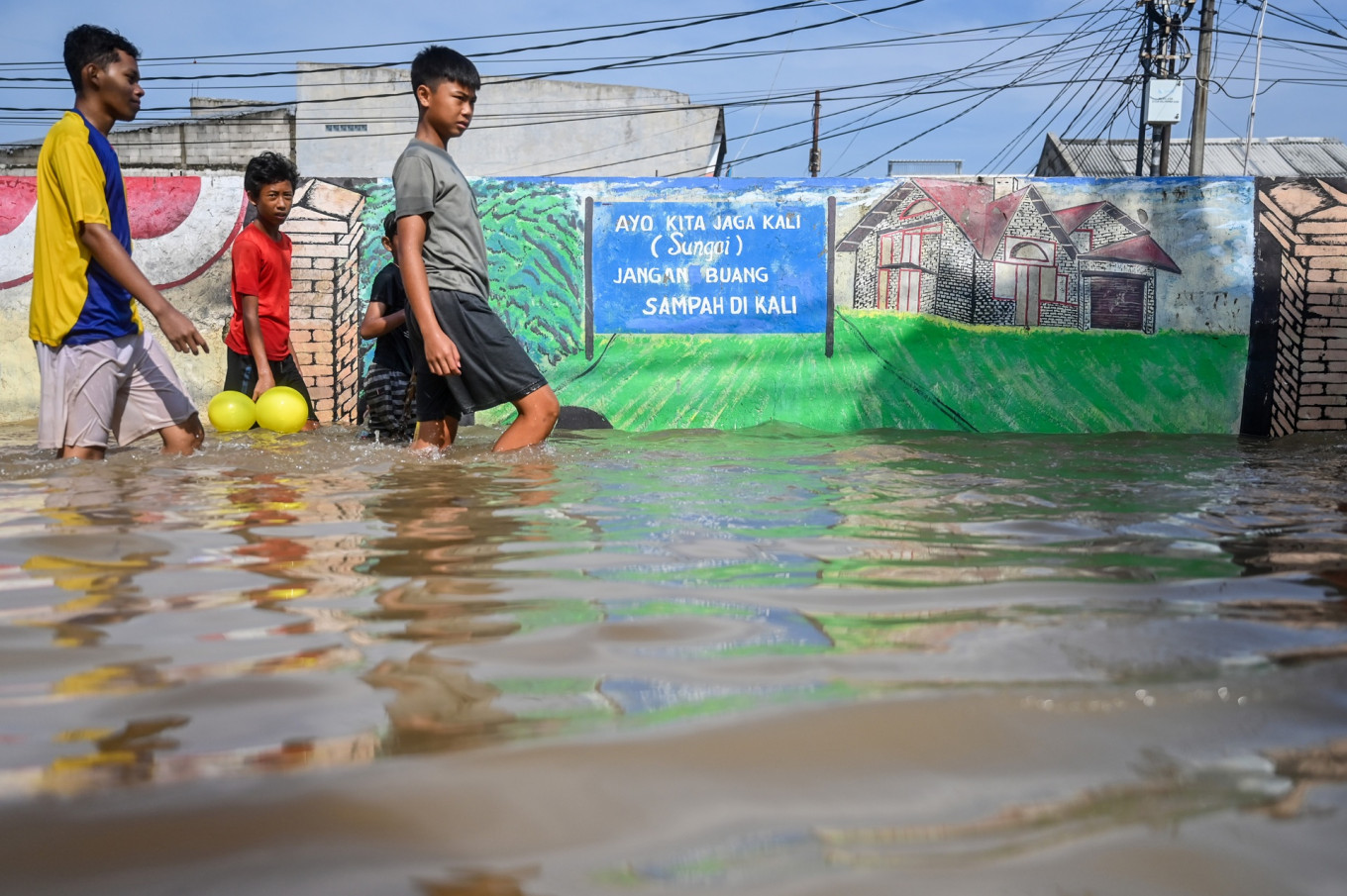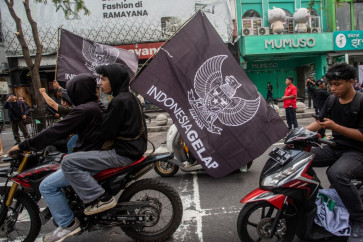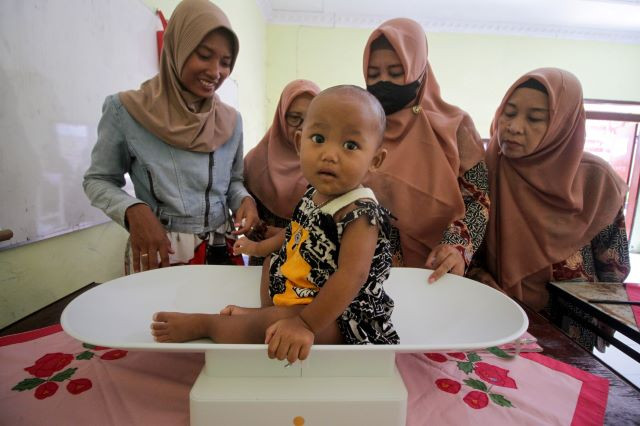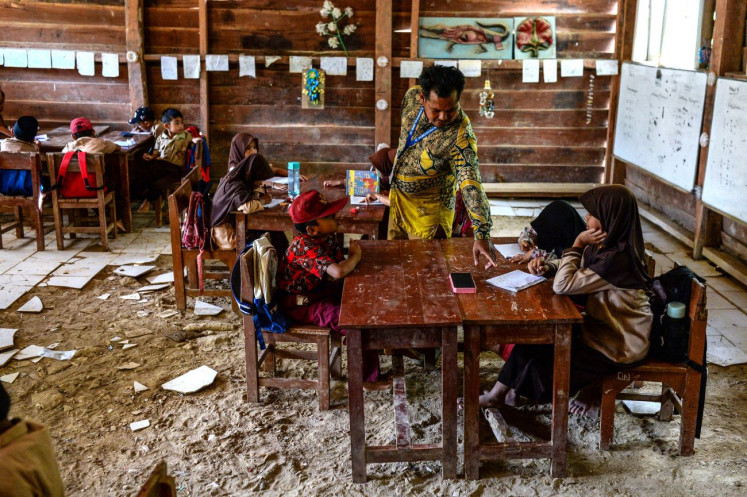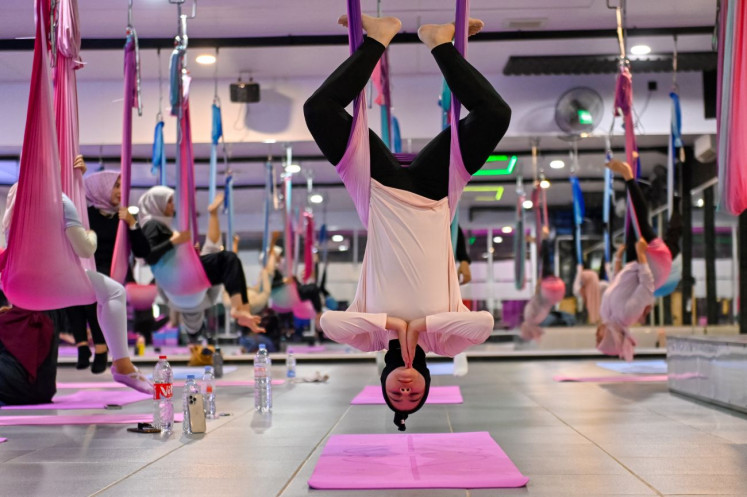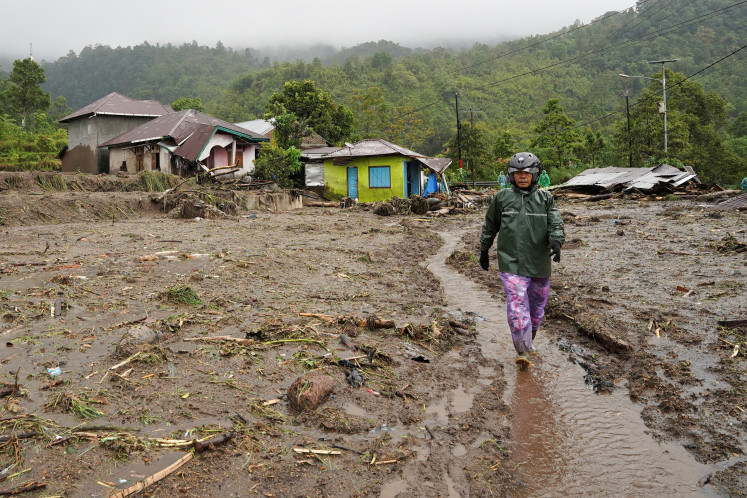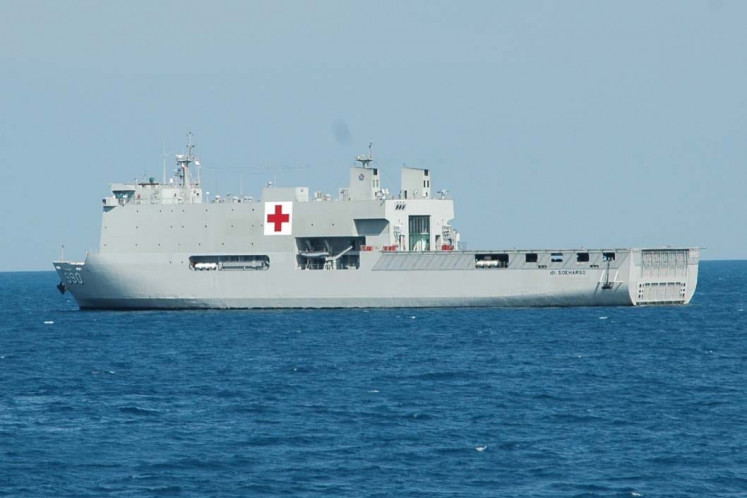Popular Reads
Top Results
Can't find what you're looking for?
View all search resultsPopular Reads
Top Results
Can't find what you're looking for?
View all search resultsRainy days in July
The unseasonal heavy rains and the hydrometeorological disasters that followed were just more evidence that the climate crisis is real and affecting our lives.
Change text size
Gift Premium Articles
to Anyone
W
elcome to the new Indonesia, where July is no longer the time when people save water in tanks to prepare for drought, but instead they hide from it under umbrellas and scoop it out of their waterlogged houses.
Last weekend, for example, hours of heavy rain poured over most parts of Jakarta and its buffer areas, triggering floods that deluged homes and the city’s arterial roads. The rain continued on Monday, creating a traffic nightmare during the evening rush hour as highways heading to suburbs were inundated.
While the flooding might be unsurprising for residents living in areas prone to inundation such as Ciledug, which sits on the border Jakarta and Tangerang, other locations in the Greater Jakarta area, usually safe from floodwaters, were affected this week.
Video footage of luxurious shopping malls in South Tangerang and Tangerang regency in Banten flooded by muddy water widely circulated on social media, showing that the July flooding knows no socioeconomic disparity.
Not only Jakarta, other regions in the country, such as Mataram, West Nusa Tenggara, were made to suffer. Floodwater nearly reached the roof of a one-story house there.
The unseasonal heavy rains and the hydrometeorological disasters that followed were just another piece of evidence that the climate crisis is real and affecting our lives.
Several studies suggest that rising global temperatures have led to warmer seas, including in the Indian and western Pacific Oceans, increasing the chance for the formation of rain clouds over the Indonesian archipelago. Around 20 kilometers above our heads, those clouds meet with other climate phenomena in the region, triggering heavy rains in Indonesia.
The July rains and flooding might be just the beginning of a future of extreme weather, as the global heating triggered by the emission of greenhouse gases is exacerbated day by day. Now is the time, if not already too late, for us to prepare and act, before the climate crisis gets worse.
We acknowledge the work of the authorities in Greater Jakarta who have responded swiftly to mitigate the flooding over the past days. Jakarta, for example, turned on its pumps to remove water from the affected areas, while rescuers helped residents seek shelter.
But it is time for them to do more in facing the worrying prognosis for our homes in an age of planetary crisis. In the future, rains may be more intense and more often, increasing the risk of flooding.
Government officials, including Jakarta Governor Pramono Anung, can no longer rely on the old solution of normalizing rivers using concrete-based infrastructure to prevent worse floods from happening in the future. They should dig deeper to address the roots of the problem, such as poor city planning that paves the way for new shopping malls or buildings but leaves no space for rainwater to run to the rivers and lakes in the city.
It is time for authorities to prioritize adaptation to the changing climate. Efforts such as building elevated villages for dense neighborhoods in the city should be a priority, aside from opening more public green space and making sure rivers flow unhindered to the ocean.
Adapting to the changing climate should go side by side with attempts to mitigate the crisis. Promoting clean, renewable energy as an alternative to fossil fuels and avoiding deforestation should be among the government’s priorities. We cannot boast of an energy transition while allowing the proliferation of coal-fired power plants to fuel our industries.
Experts have warned that we are in dire times where actions to mitigate and adapt to the changing world due to the climate chaos are more than necessary. The recent heavy rain and flooding during the supposed dry season should serve as a wake-up call for us all to work harder in preventing the worst from happening.
Let July be the best time to feel the warmth of the sun.

